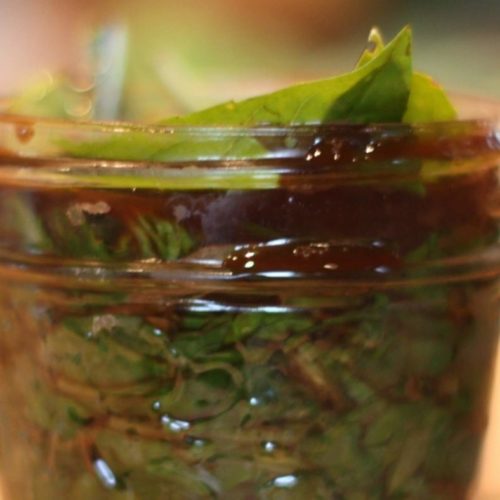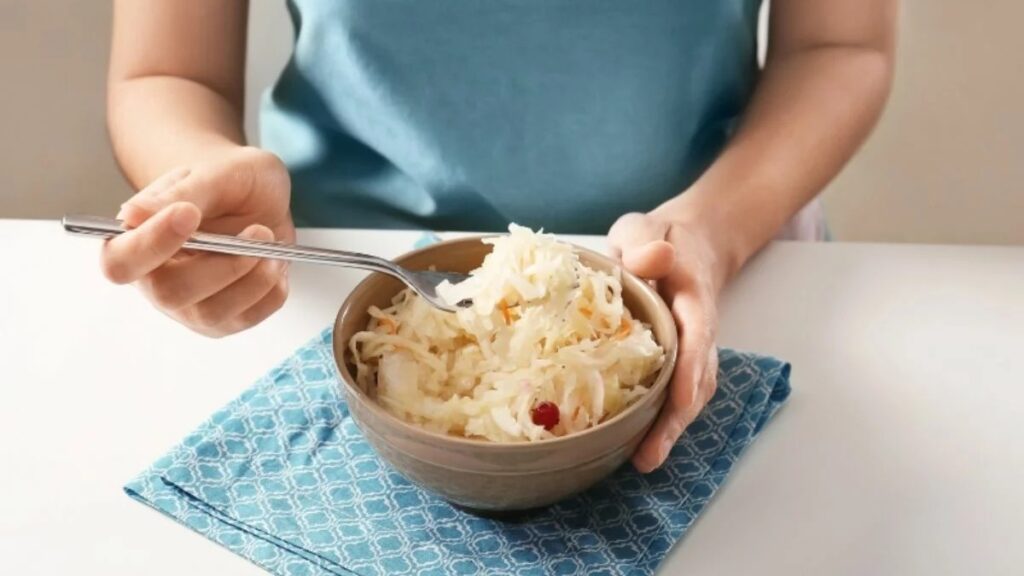Yes, you can ferment basil leaves!
Fermenting basil leaves is a great way to preserve their essential oils, while releasing the unique tangy flavours associated to lacto-fermentation. It’s also a great way to always have fresh basil on hand!
This recipe uses whole basil leaves, but you can also try fermenting it as a paste.
You can use any kind of basil in this recipe: lemon, Thai, Peruvian… They all have their unique benefits and flavors.
As for the salt, the only rule to follow is that there is only “SALT” in the ingredient list. No iodine (harms fermentation) or anti-caking agents (harms taste). Just salt. Now, it’s up to you to choose the type of salt, it doesn’t make a difference on the fermentation process. So you have free rein!
A kitchen scale is very handy because the amount of salt is determined by the total weight of the basil. The best way to know this is to weigh it. Also, this recipe is in the metric system, because it’s so much easier to work with that system when you’ve done calculations in percentages.
For example, if you have 500g of basil, you will need to add 10g of salt (about a teaspoon) to reach 2%. Don’t worry if your scale is not precise enough to weigh small volumes, because you can go with a little approximation: 1 teaspoon of salt = about 10g.
Lacto-fermented basil will keep for one year in a cool place.

Fermented Basil Leaves Recipe
Equipment
- Glass jars (Mason jar or other)
- Small kitchen scale (optional)
Ingredients
- Basil (whole leaves)
- 2% of the weight of the basil in salt (without iodine or anti-caking agent)
Steps
- Mix the basil leaves with the salt and massage lightly. A brown juice will come out immediately and the leaves will shrink in size. It's normal.
- Place the leaves in your glass jar and squeeze out the bubbles (using a tamper or your hands). Try to get as much out as you can, but it does not matter if you don't get them all.
- Cover with a weight or counterweight to keep the basil under the brine. You can add a little water if too much basil is in contact with the air.
- Put on the lids (not too tightly!), and place in a tray. Let it ferment at room temperature for one to two weeks.
- Let it ferment longer if you want a more acidic flavour. Otherwise, put in the fridge.
How to Use Fermented Basil
Fermented basil can be used in the same way you would use fresh basil. Add it in salads, sauces, pasta, grilled cheese… You can also make a deliciously tangy and healthy pesto!
To fully enjoy the flavours and benefits of lacto-fermentation (hello probiotics and useful bacteria!), it is best to add your fermented basil once the dish has been removed from the heat source.

